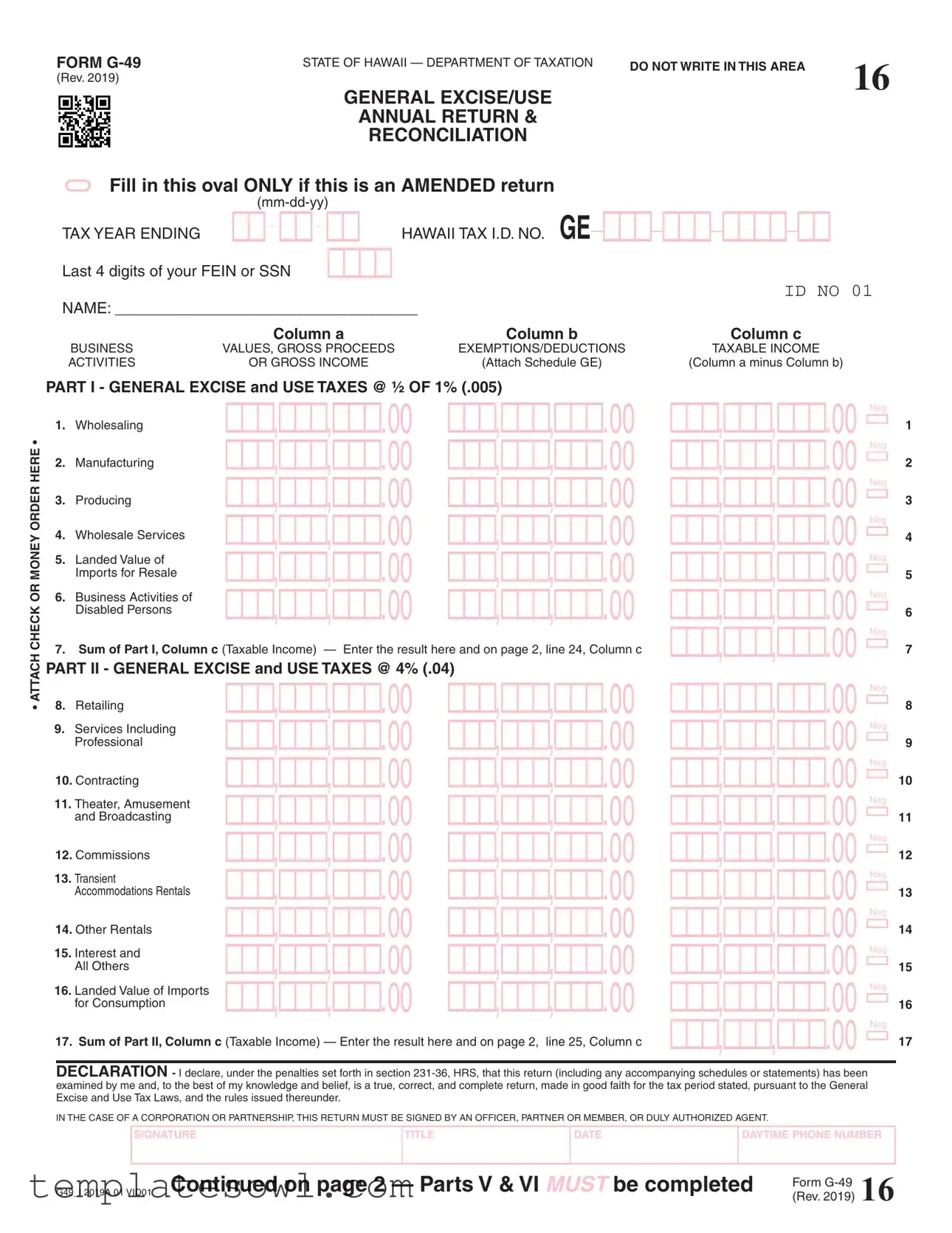What is the G-49 form?
The G-49 form is the General Excise/Use Annual Return and Reconciliation for the state of Hawaii. It's a tax form that businesses use to report their gross income, exemptions, and deductions for the year. Understanding how to fill out this form is crucial for compliance with Hawaii's tax laws.
Who needs to file the G-49 form?
Any business operating in Hawaii that is subject to the General Excise Tax must file a G-49 form. This includes corporations, partnerships, sole proprietorships, and other entities engaged in commercial activities. If your business generates income in Hawaii, it's likely you'll need to submit this form annually.
When is the G-49 form due?
The G-49 form is usually due on the last day of the month following the end of the tax year, which for most businesses is December 31. Therefore, the form should typically be submitted by January 31 of the following year. If you operate on a different fiscal year, the deadline will correspond to the end of that fiscal period.
What information do I need to complete the G-49 form?
To fill out the G-49, you'll need several pieces of information. This includes your Hawaii Tax Identification Number, the last four digits of your Federal Employer Identification Number (FEIN) or Social Security Number (SSN), and your total gross income for the year. You’ll also need to report any applicable exemptions or deductions, as well as calculate the taxes owed based on the provided rates.
Can I amend a previously filed G-49 form?
Yes, if you discover an error in your previously filed G-49 form, you can amend it. Make sure to fill in the oval that indicates the return is amended, and include detailed explanations and corrections. Amending your return ensures that any discrepancies are corrected, which helps avoid potential penalties or interest for underreporting your taxes.
What happens if I miss the filing deadline for the G-49?
If you miss the deadline for filing the G-49, you may be subject to penalties and interest on any unpaid taxes. It's important to file as soon as possible to minimize these costs. If you find yourself in this situation, consider contacting a tax professional for guidance on how to proceed.


